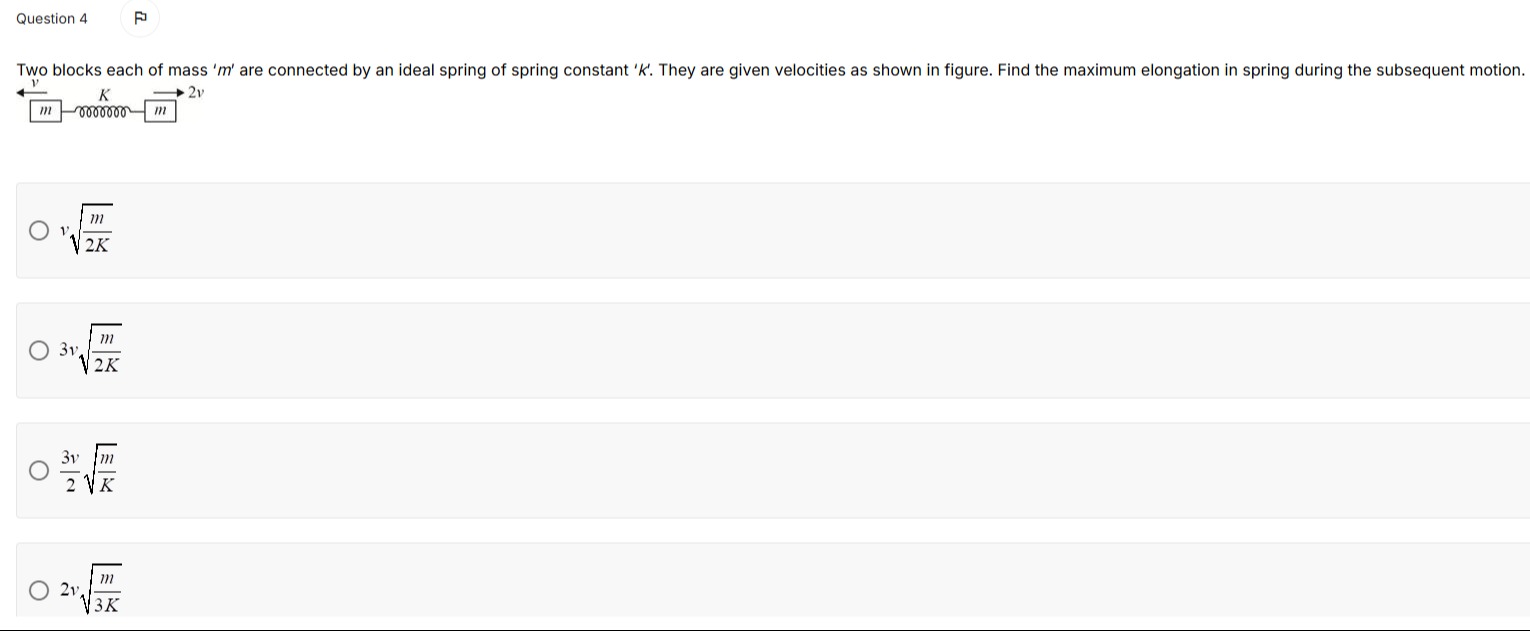Question
Question: Two blocks each of mass 'm' are connected by an ideal spring of spring constant 'K'. They are given ...
Two blocks each of mass 'm' are connected by an ideal spring of spring constant 'K'. They are given velocities as shown in figure. Find the maximum elongation in spring during the subsequent motion.

A
v2Km
B
3v2Km
C
23vKm
D
2v3Km
Answer
3v2Km
Explanation
Solution
Let the velocities be taken with the positive sign to the right. Then:
- Left mass: v1=−v
- Right mass: v2=2v
The center-of-mass velocity is:
vcm=2v1+v2=2−v+2v=2v.Relative velocity (difference) is:
vrel=v2−v1=2v−(−v)=3v.In the center-of-mass frame, the effective initial relative speed is 3v. For two masses m, the reduced mass is:
μ=m+mm⋅m=2m.The initial relative kinetic energy is:
KErel=21μ(3v)2=21⋅2m⋅9v2=49mv2.At maximum spring elongation, the entire relative kinetic energy is converted into spring potential energy:
21Kx2=49mv2.Solving for x:
x2=2K9mv2⟹x=3v2Km.